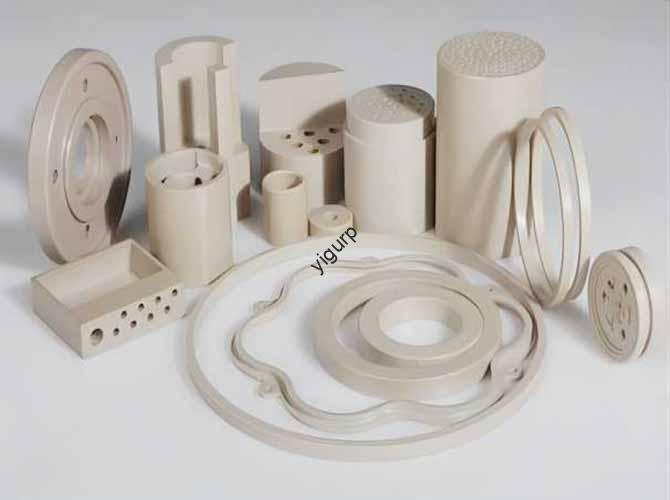Ever found yourself stuck in product development—waiting weeks for a prototype, overspending on materials, or struggling to test complex designs? 3D printing solid prototypes sono la soluzione. These physical, fully formed models transform how teams validate designs, tagliare i costi, e accelerare il time-to-market. Sotto, we break down their core benefits, usi del mondo reale, step-by-step production, and how to avoid common pitfalls.
1. Vantaggi fondamentali: Why 3D Printing Solid Prototypes Beat Traditional Methods
Cosa fa 3D printing solid prototypes a game-changer? The table below compares them to traditional prototyping (MACCHING CNC, manual making) to highlight clear advantages:
| Benefit Category | 3D Printing Solid Prototypes | Prototipazione tradizionale (CNC/Manual) |
| Velocità di produzione | 1–3 days for complex designs (PER ESEMPIO., parti automobilistiche) | 2–4 weeks for the same complexity |
| Efficienza dei costi | 50–70% lower material waste; no tooling fees | 20–30% material waste; expensive tooling ($500+) |
| Flessibilità di progettazione | Handles internal cavities, dettagli fini (0.1MM Precision) | Lotte con forme intricate; limitato dagli strumenti |
| Ripetibilità | Risultati coerenti (± 0,05 mm tolleranza) across batches | Variability from manual labor or tool wear |
| Small-Batch Suitability | Ideal for 1–100 units; no setup cost increases | Costly for small runs (tooling fees don’t scale) |
2. Applicazioni chiave: Solving Problems Across Industries
3D printing solid prototypes aren’t just for “testing”—they solve unique challenges in three critical sectors:
UN. Design industriale (Automotive/Aerospace)
Engineers need to validate part fit and function before mass production. Per esempio:
- An automotive team used 3D printing solid prototypes to test a new engine bracket design. Traditional CNC would have taken 3 settimane e \(2,000 in tooling—3D printing delivered 5 prototipi in 2 giorni per \)300 totale.
- Risultato: They identified a stress point early, evitare un $50,000 recall later.
B. Elettronica di consumo
Brands prioritize ergonomics and user experience. A smartphone maker:
- Stampato 10 solid prototypes of a new phone case (using SLA technology) to test grip and button placement.
- Used feedback to adjust the case’s curve—reducing user hand fatigue by 30% (per user testing).
C. Istruzione
Teachers struggle to make complex concepts tangible. A university:
- 3D printed solid prototypes of human bones and gear systems for engineering/biology classes.
- Student comprehension scores improved by 45% (contro. textbook-only learning), as students could touch and disassemble models.
3. Step-by-Step Production Process: How to Make a 3D Printed Solid Prototype
Creazione di a 3D printed solid prototype is straightforward—follow this linear, actionable workflow:
- 3D Modellazione: Usa il software (Solidworks, Fusione 360) to design a digital model. Concentrarsi su:
- Adding clear dimensions (PER ESEMPIO., “100mm length, 5mm wall thickness”).
- Marking support structures for overhangs (angles >45° need support).
- Tech & Selezione del materiale: Choose based on your needs:
| 3D Printing Tech | Meglio per | Materiali utilizzati |
| SLA (Stereolitmicromografia) | Dettagli fini (PER ESEMPIO., gioielli, elettronica) | Resine (Addominali, flessibile) |
| FDM (Modellazione di deposizione fusa) | Durable parts (PER ESEMPIO., parentesi) | Pla, Petg, nylon |
| SLS (Sintering laser selettivo) | Parti resistenti al calore (PER ESEMPIO., Componenti del motore) | Poliammide (nylon), glass-filled composites |
- Stampa & Post-elaborazione:
- Upload the model to the printer, set parameters (altezza strato: 0.1–0,2 mm), e inizia a stampare.
- Dopo la stampa: Rimuovere i supporti, sand the surface (per la morbidezza), and paint if needed (PER ESEMPIO., for visual prototypes).
4. Common Pitfalls & How to Avoid Them
Even great 3D printing solid prototypes can fail—here’s how to fix top issues:
| Pitfall | Causa | Soluzione |
| Weak part structure | Pareti sottili (<1mm) or lack of support | Increase wall thickness to 1.5–2mm; add support for overhangs >45° |
| Finitura superficiale ruvida | High layer height (>0.2mm) | Use 0.1mm layer height; sand with 400-grit sandpaper post-print |
| Dimensional inaccuracies | Printer calibration issues | Calibrate the printer’s bed level and filament flow before printing |
5. La prospettiva della tecnologia Yigu
Alla tecnologia Yigu, vediamo 3D printing solid prototypes as the backbone of fast, smart product development. We’ve helped clients cut prototyping time by 60% using our optimized SLA/FDM printers and high-performance materials (PER ESEMPIO., heat-resistant resins for industrial parts). We also offer custom workflows—for example, a medical client used our SLS service to print biocompatible prototypes, accelerating their device’s FDA approval by 3 mesi. Per noi, it’s not just about printing parts—it’s about helping you solve problems faster.
Domande frequenti
- What’s the maximum size of a 3D printed solid prototype?
Most desktop printers handle up to 300x300x300mm. Per parti più grandi (PER ESEMPIO., automotive bumpers), we use industrial printers (1000x1000x1000mm) or print in sections, Quindi assemblare.
- How long do 3D printed solid prototypes last?
Dipende dal materiale: PLA prototypes last 6–12 months (good for testing), while nylon/SLS prototypes last 2–3 years (suitable for long-term use).
- I prototipi solidi stampati in 3D possono essere utilizzati per test funzionali (PER ESEMPIO., Stress test)?
Sì, scegli materiali durevoli come nylon o PETG. Per esempio, un prototipo in nylon può resistere 500+ cicli di flessione (simulando l'uso reale) senza rompere.
